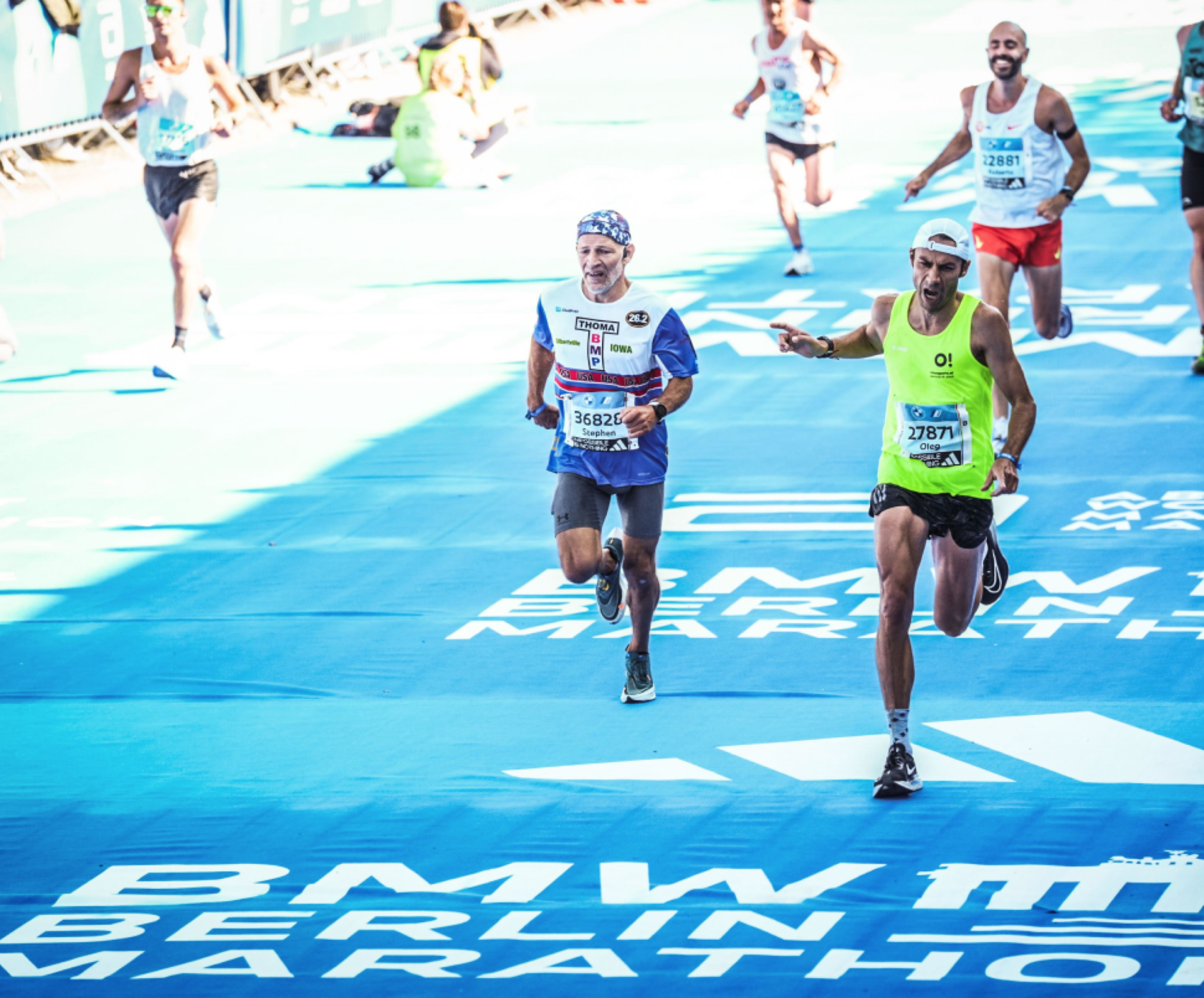Working on the personalized training service, we test everything on ourselves. With each new update, we take a step forward, and imperceptibly immerse ourselves in running more and more. Read the story of how it all led me to the Berlin Marathon and what was the result.
Triathlon Background.
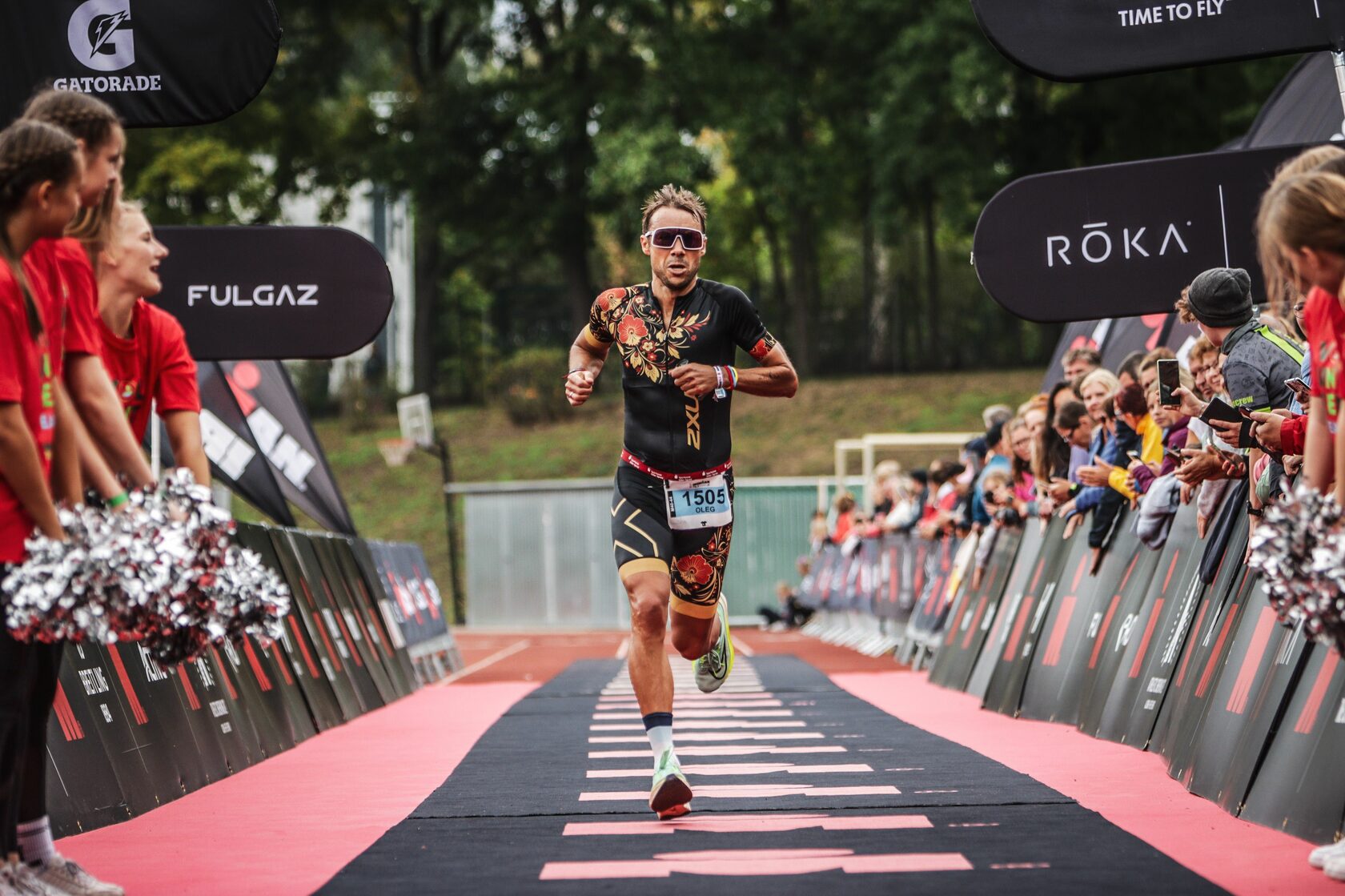
While remaining grounded in triathlon and multisport, I still immersed myself heavily in running starting in 2020 — concurrent with the development of OMY! Sports, a virtual coaching app for runners. The thought of running a major marathon has long buzzed me. But I’m not a fan of collecting starts, my goal is to get the best possible result. And the main criterion is always the same — at the start I try to do the most of what I am capable of. There are many other factors, but the main thing is the result.
I realized that a marathon within Ironman and a separate marathon race are two big differences. And this had to be tested with my own feet.
An event that is hard to resist.
Living in Berlin, 500 meters away from the start of the Berlin Marathon, it is very hard to resist the temptation фтв not to participate in such a spectacle. After several live viewings and riding along the course with my phone trying to keep up with the leaders from Kenya and Ethiopia, the idea to register and run was born by itself.
He who is lucky is lucky.
However, difficulties arose at the registration stage. The first 2 attempts — through participation in the lottery — ended in nothing. I did not get the luck. Each time in 2021 and 2022, I received a letter from the organizers: “We are sorry, but you were not among the lucky winners. Good luck next time!”
Any major marathon is not an ordinary race. Participation in it must be earned — and it can't be solved at the drop of a hat. Besides the lottery, the organizers offer 2 basic ways to get into it — money or results. Everyone can do it with money, but qualification by result intrigued me more. I remembered how I qualified for the Ironman Triathlon World Championships in Kona and the UCI Masters, and I thought, “I should follow the same path!”
Our vacations took us to Lago Maggiore in 2022, which to my delight stages an annual Lago Maggiore marathon. I completed the race at 2:44:30 after fast-track prep training on our app. That was enough to qualify for Berlin.
The scale is amazing.
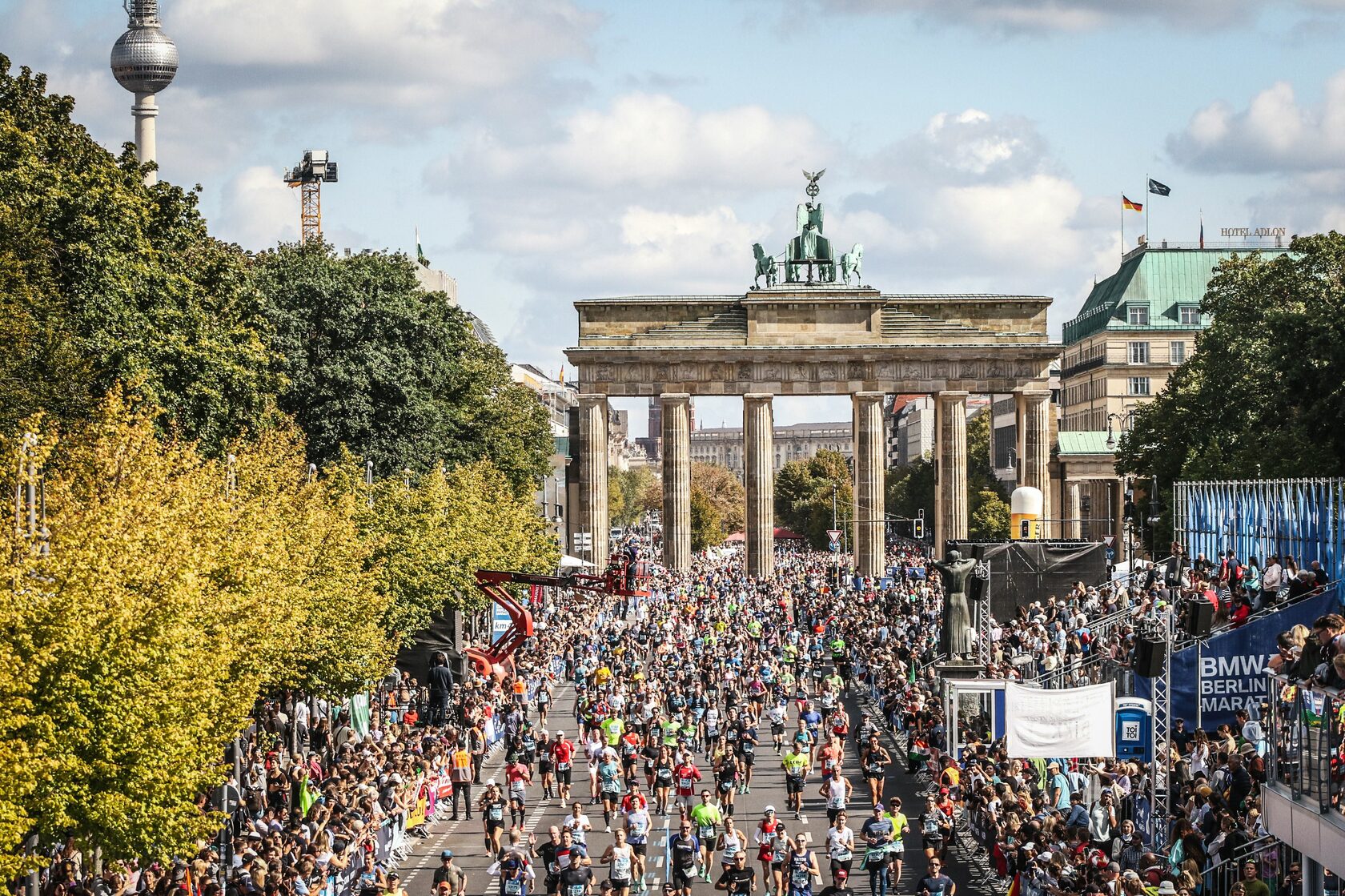
I have to say that the Berlin Marathon is different from all the other events I have participated in — including Ironman starts. This is an event on a grandiose scale! 47 thousand participants from 122 countries started from a huge starting area stretching along the 17th of June Str. in the very center of Berlin.
I started from Cluster B, but getting into it proved to be a non-trivial task. I lazily warmed up and gave myself 30 minutes to calmly walk through the starting area and get into the part of the cluster I wanted. But no such luck. I barely managed to squeeze through the crowds of runners, and even had to climb over 2 fences to eventually get into the right place 5 minutes before the start.
After the starting shot.
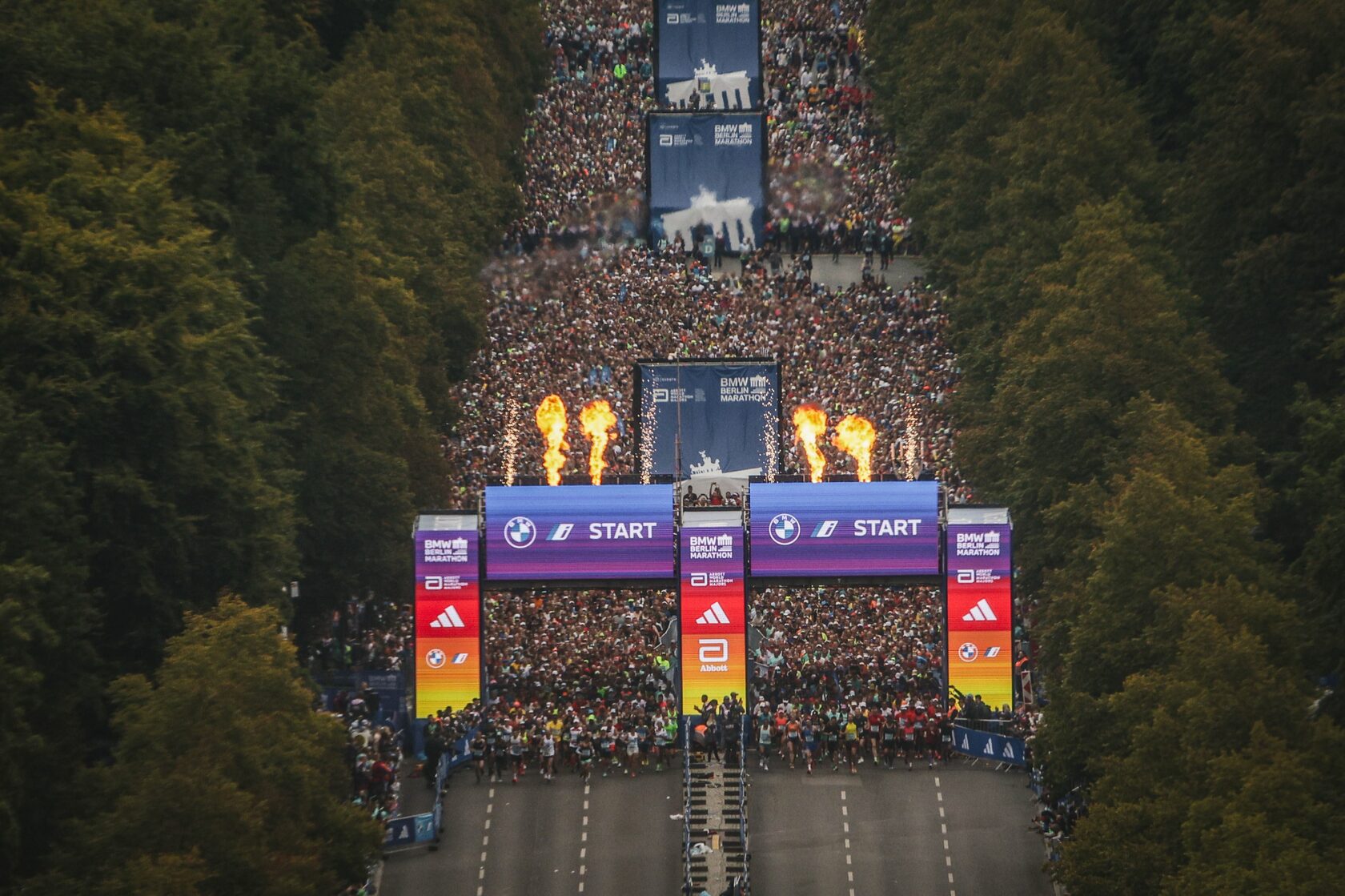
By the time of the start, it was a cool 12 degrees outside. But in the crowded starting pocket it was as hot as in the subway at rush hour.
3 minutes before the start the air above the crowd of thousands was ready to start sparking, warm clothes taken off at the last moment flew in different directions, someone prayed, and strangers wished each other good luck. The mayor of Berlin counted out 5–4–3–2–1, pressed a button, a light went up over the starting arch 10 meters away from me and we started running out onto the track! The leaders broke away at once, and we — amateurs — spread across the width of the street.
The first 15km I was in a large crowd of those running a marathon under 2:50, and saw almost nothing. Other than the legs and butts of the runners ahead of me, I probably don’t have much to recall here. Good thing is that 30% of the Berlin Marathon participants are women 😊
Energy of fans.
My support group was waiting for me at the 21.1 km cut-off, but they couldn’t shout down the crowd. It was nearly impossible to hear anything among the voices of 200 thousand other fans who were standing along the whole race course!
In the tight spots, people standing on both sides naturally turn you into a tunnel of sound that carries you further. This energy never leaves you for a minute throughout the marathon course, which gives you strength and leaves no room for unnecessary thoughts. Incredible support!
After long and lonely 33–40 km running workouts, such crazy support is a huge gift, motivation and source of strength.
A half marathon is only a half.
In August, I ran the awesome Luzhniki half marathon. After running it not too fast in 1:19:24, I was pretty tired in the last two kilometers. It was very hard to imagine that I could have run twice as much at that time.
In Berlin it was different — the training and the mood for the race contributed to this. The continuous support of the fans also helped. During the first 21.1 kilometers, I diligently saved my energy. I ran the first half in 1:20:33. But there was another one ahead. As it turned out later, I ran the second half a little slower — 1:22:28.
Embrace the suffering.
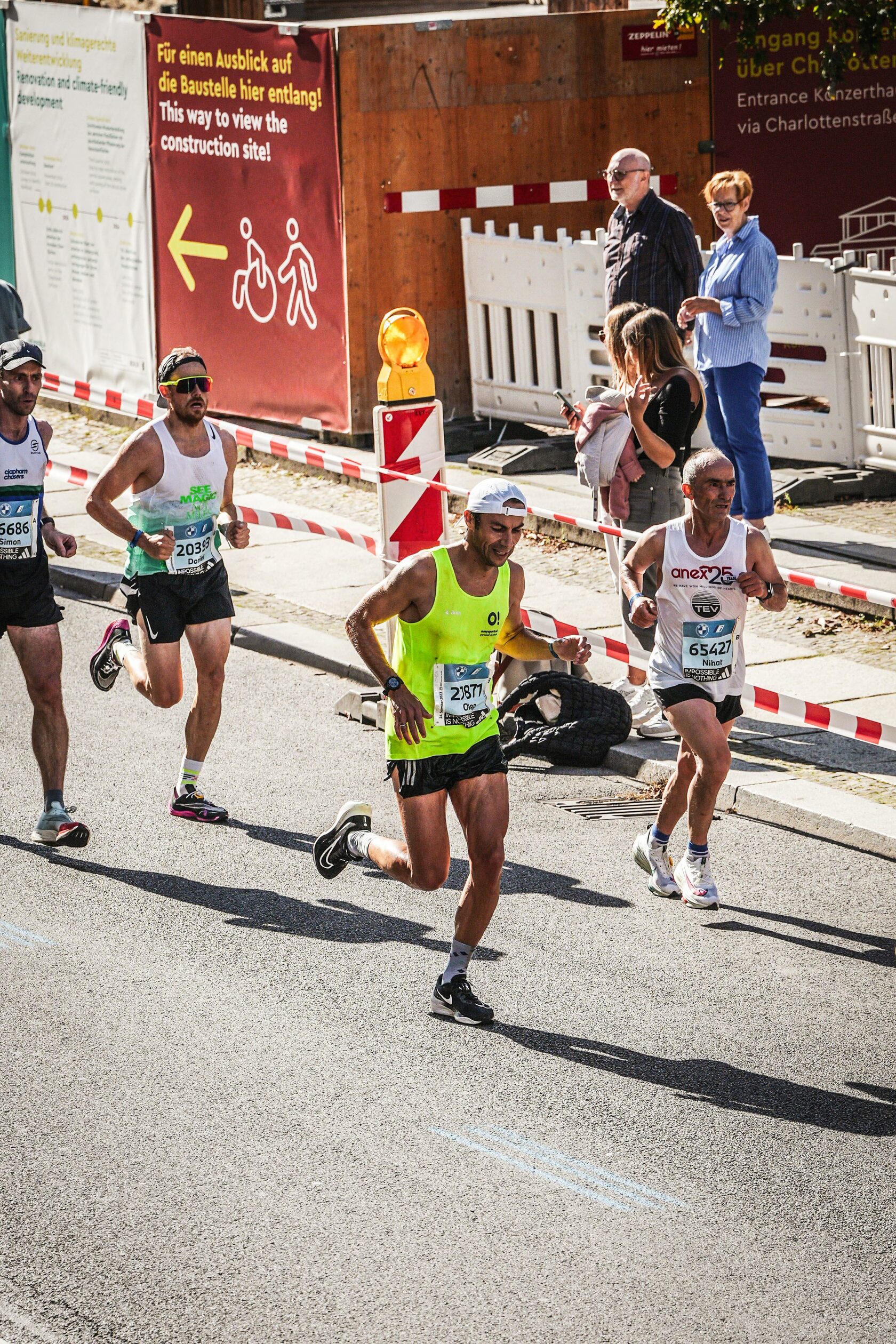
From km 21, the course goes up and reaches its highest point at km 28. Then it starts to descend to the 33rd kilometer, where the first signs of fatigue appear and the feeling of running changes — your legs are still running, but it’s as if someone is pulling you back.
By the 33rd km the picture around ceases to be festive and becomes more like the atmosphere of a hospital 🥵 Runners around begin to suffer — breathing hard, moaning, and cramps start. My peripheral vision narrows — now I can only see the tunnel in front of me with 3 blue stripes on the pavement marking the entire distance.
As it turned out later, on the 35th and 36th km my friend rode next to me on a bicycle and tried to cheer me up. I don’t remember it at all and after the finish I had to explain myself.
Behind the 37th kilometer.
After the 37th kilometer, my wife suddenly ran out of the crowd and put a bottle in my hand. I automatically grab the bottle — I’ll grab my wife later 😘
There are still 5km to go, but my muscles have already started to get stiff and the minor cramping starts in my calf muscles. Racing experience has taught me to manage this process so that I don’t stop. Which is what I did. If anyone needs, please contact me — I will tell you how.
Starting from the 39th km the pace starts to drop noticeably. Instead of 3:50, I am running 4:05–4:08 min/km. Morally, I am ready for it, especially since I will be accelerating at the finish 1.5 km at any cost!
Unter den Linden.
Immediately after the turn to Unter den Linden, I pick up the pace back to 3:50 min/km. Then I run through the Brandenburg Gate and dig deeper — I turn on my hands and add up to 3:40 to finish. 100m to the finish line I flew, trying to portray a smile of a mixture of physical suffering and euphoria. Finish!
Under the finish arch.
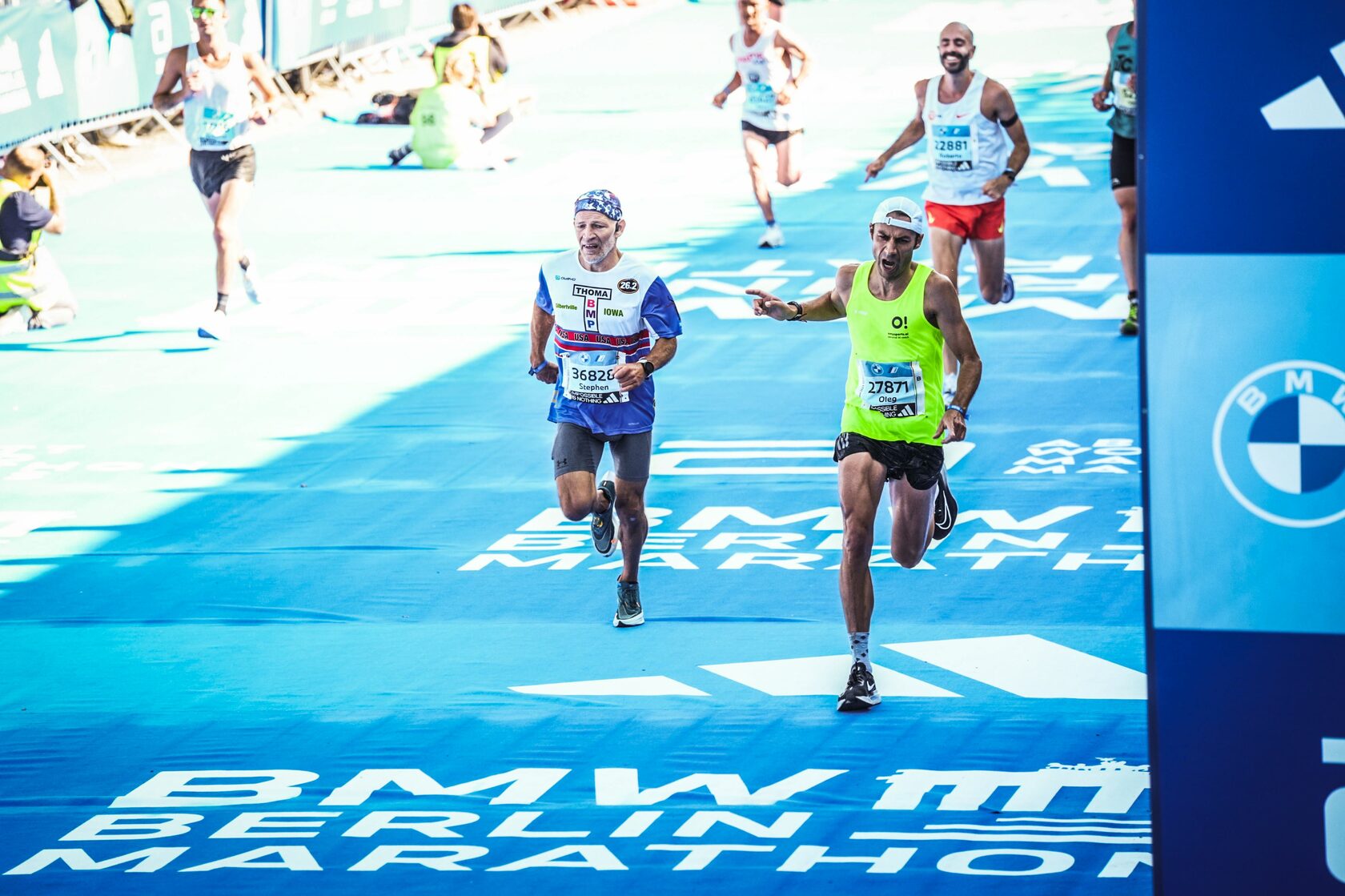
On the blue carpet of the finish area, I turn off my watch, press myself against the railings to get air into my lungs, and a couple minutes later look at the time — 2:43:04 (official time 2:43:01).
Yes! Mission completed! Not bad for a first major! The time is a Personal Record, a minute and a half faster than the previous result. I also felt much better than expected throughout the run.
About running technique.
Since 2013, I have been running with my head up proudly and my body straight. All the coaches told me to lean forward. But I continued to run like a sprinter. Preparing for Berlin, my volumes exceeded 100 km per week, and running with an upright body began to complicate my life. So 1 month before the start I changed my technique and ran the way I needed to — the body slightly forward in a state of “controlled fall”. This relaxed the upper body and increased the amplitude of arm movement — highly recommended.
About nutrition.
During 42,2 km I ate 2 Maurten gels totaling 100 g and drank a lot of liquids — water, sweet tea and some Red Bull. Not too much, but my body probably learned to use fats when glycogen sources are empty. Nutrition, like other things, is very individualized, but one thing is important for everyone: the more your body is adapted to extract energy from fat, the easier it will be on the marathon.
About the training plan and the coach.
Starting from 2020, my plan is done by OMY! Sports virtual coach. As the experience of those who have started marathons with us in 2023 shows, the OMY! Sports does a great job of training and helping runners of all levels to beat their PBs. As a friend of mine, a marathon runner and now a triathlete put it — it’s the best way to promote a product.
About the sneakers.
I ran in the Nike Zoom Fly 5 without carbon, which I got used to during my training. It might have been a little faster with carbon, but I’ll find out in the next episode. The only thing I missed was their size. With a standard foot size of 45, the Nikes were 46 with a significant drop between the heel and toe. While running, the foot tends to move forward inside the sneaker, which causes the toes to tuck, strains the anterior shin muscles, and injures the toenails. All of this has a negative impact on speed. Next time I will choose one of two things — sneakers with a smaller drop or a larger size, such as 46 1/3.
The official results of the Berlin Marathon 2023.
In my opinion, this Berlin Marathon belongs to a 26-year-old runner from Ethiopia, Tigst Assefa. She ran the marathon in 2:11:53 and set a new world record in the women’s marathon.
Not only did she beat the previous record by more than 2 minutes, but she also ran the marathon with a negative split — the first half in 66:20 and the second half in 65:33. And if we remember that the Ethiopian started running marathons only 2 years ago with a result of 2:34:01, her results and progress look amazing!
Kenyan Eliud Kipchoge won the Berlin Marathon for the 5th time, but no record this time. His final time was 2:02:42.
